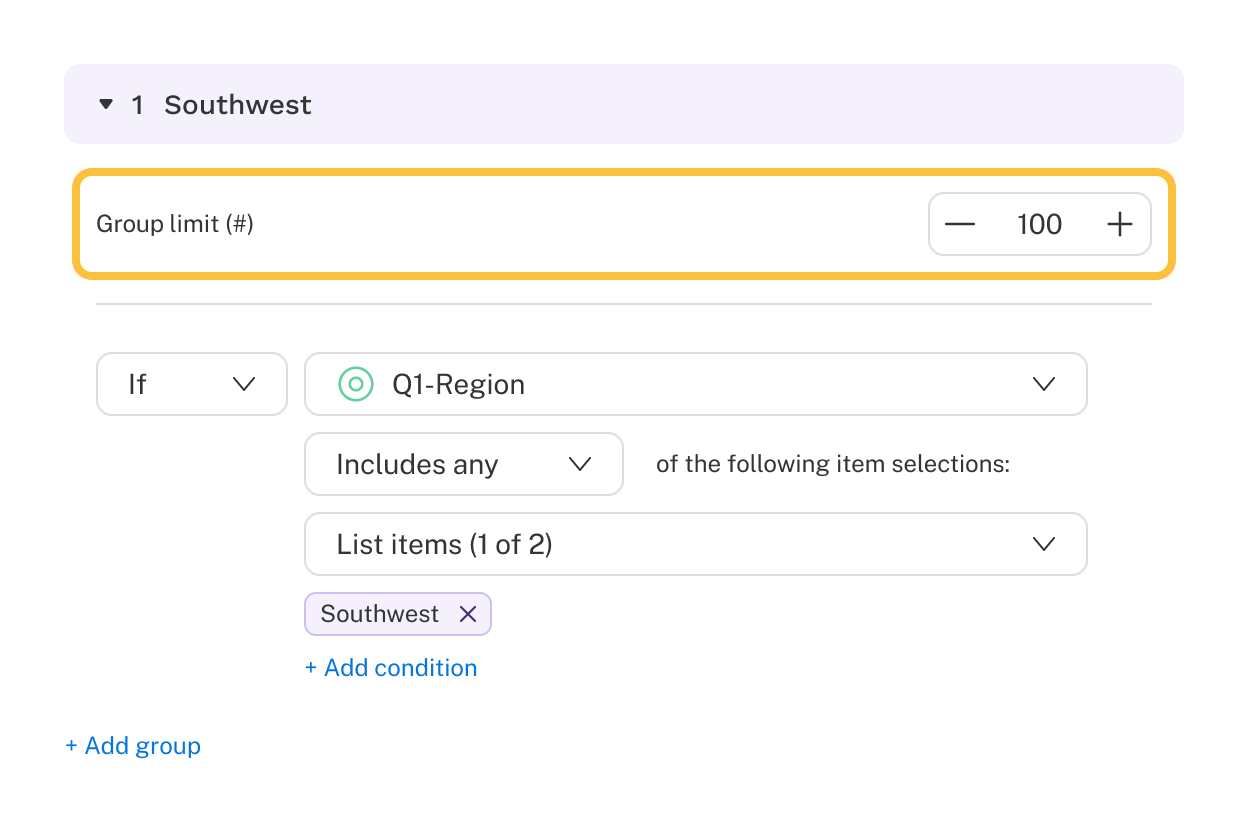Introduction
Quotas allow you to use logic to categorize respondents. Quotas function behind the scenes. When a respondent reaches the quota in the survey, they are either assigned to a quota group or marked as "unassigned" or "over quota."
- Assigned respondents continue through the survey.
- Unassigned or over-quota respondents are redirected to another location, such as a survey ending, as determined by the survey author.
For example, a quota could have this logic:
Group limit = 100
If Purchase = Yes
Group limit = 100
If Purchase = No
This logic permits up to 100 respondents from both the Customers and Non-Customers groups to participate in the survey. Respondents who qualify for these groups will proceed to the next question in the survey. Once the quota limits for both groups are reached, no additional respondents can be assigned to these groups, and they will follow the designated over-quota path.


